Creating Memories with Avery Needle Cases and Other Sewing Items
The following narrative was original written in 2017 after my visit to the UK and was published in the Fall 2017 issue of the Thimble Collectors International Bulletin. The published version has less photographs than what is presented here because it was edited in order to fit the available space in the Bulletin. Therefore, the version below contains a couple more photographs than the published version.
The past year turned out to be one of the best of my life In October 2016 I traveled to Melbourne, Australia to give a presentation on Avery needle cases at the Needlework Tool Collectors Society of Australia (NTCSA) conference. Five months later in March 2017, I finished writing my second book entitled “A Guide to Collecting Avery Needle Cases” which was published in April. Then in May I traveled to the UK to give more presentations on Averys, one at the Dorset Thimble Society (DTS) conference in Bournemouth and another at the Forge Mill Needle Museum in Redditch, the town where Avery needle cases originated.
I always say it’s the people you meet along the way that make life’s journey special. And I met many interesting people during these trips and also picked up a few new items for my collection. Additionally, I try to make sure I have an interesting story to tell about each needle case I own because that is what makes them even more special to me. Let me share some of these stories from the UK part of my travels with you.
One of my first stops in the UK, in route to the DTS conference, was the town of Salisbury. The reason I wanted to stop there was because two months prior to my trip I purchased a Mauchline ware needle case with Salisbury cathedral on it. Roughly a year ago I decided to add a few pieces of Mauchline ware to my collection because I was having difficulties finding Averys I didn’t already have. This needle case was in the black lacquer ware style with gorgeous hand painted pink roses surrounding a drawing of the cathedral (photo 1). It was so interesting that I looked up the cathedral online to see if I might have time to stop and visit it on my way to Bournemouth. When I discovered there was a special tour that involved climbing 332 steps inside the cathedral’s spire, I immediately booked tickets online. Now every time I walk by my display case and see that needle case I think of the beautiful views of the city and countryside I had from the spire.
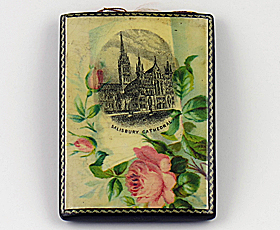
Photo 1 - Mauchlineware needle case with Salisbury Cathedral
A few days later I arrived in Bournemouth for the conference and met many DTS members as well as my friend Lynda Herrod from Australia, a fellow Avery collector who was also attending the conference while traveling abroad. One of the highlights of the conference was meeting Jean Scott (photo 2) who wrote an interesting booklet on Avery needle cases back in 2006, which she revised in 2012. Lynda, Jean and I spent considerable time talking about Averys and was I ever surprised when Jean agreed to sell me three of the Avery Quadruple needle cases pictured in her booklet: the Diamond Jubilee, the Lion on Shield and the Gay & Son version (photo 3). Even though these were outstanding additions to my collection, it was the gift she gave me that I will always treasure, a Mauchline ware sewing box with The Garden in Bournemouth (photo 4) pictured on the top. Just looking at this sewing box brings back memories of all the wonderful people I met at the conference including Jenny Bundock, DTS Chairman, and Chris Brett, DTS Conference Secretary (photo 5).
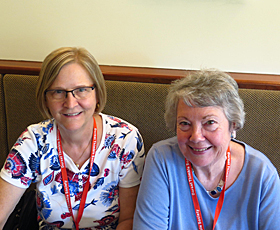
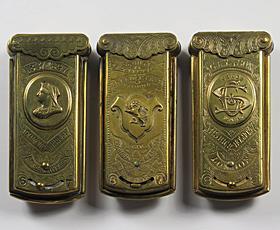 Photo 2 - Terry with DTS member Jean Scott
Photo 3 - Avery Quadruples
Photo 2 - Terry with DTS member Jean Scott
Photo 3 - Avery Quadruples
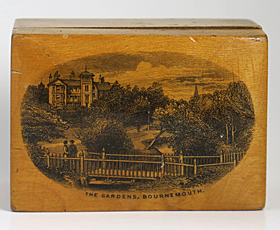
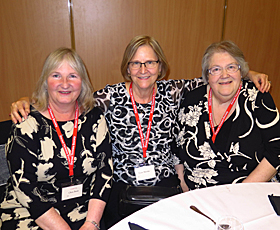 Photo 4 - Mauchline ware sewing box
Photo 5 - Jenny Bundock, Terry and Chris Brett
Photo 4 - Mauchline ware sewing box
Photo 5 - Jenny Bundock, Terry and Chris Brett
My next stop in the UK was the city of Birmingham where Avery needle cases were originally manufactured. My goal here was to visit nine sites where the companies that patented Avery style needle cases were originally located. Of the nine, two were especially interesting: 1) the Henry Jenkins and Sons factory, and 2) the W. O. Lewis building. The Jenkins factory exterior (photo 6) still looks much like it did during the Victorian period, a three-story brick building with lots of windows to let light into the factory’s work space because back then electric lighting hadn’t been invented yet. While looking at the facade I swear I saw a butterfly sail by. Was it real or just my imagination, after all this is where Avery’s Butterfly-Filigree needle case (photo 7) was manufactured. However, for me the most interesting building was the one with the “W. O. Lewis” sign (photo 8) on the front. I knew W. O. Lewis was the successor to J. W. Lewis who patented and manufactured the first Avery style needle case, the Beatrice (photo 9) in 1867. Although the current building was obviously not as old as the original Lewis company, I was thrilled to see that the company still existed. When I walked up to the front door for a closer look, I decided to knock and see if anyone knew anything about Lewis needle cases. I was pleasantly surprised when one of the workman escorted me to the owner’s office and showed me a display case filled with items the company made over the years. Unfortunately, the owner was not in but the workman mentioned that the company had been in the owner’s family for many generations. Then he suggested I look at a framed advertisement hanging on the wall from 1873 (photo 10) which mentioned that the company was the patentee and sole manufacturer of the Beatrice, Alexandra, Unique and Louise needle cases. Years earlier I found the patents for the first three of these but I never knew the Louise was also produced by this company. As a result, the Louise needle case (photo 11) in my collection, one of my favorites, is now extra special as is the Butterfly-Filigree. A couple of days later I purchased a nickel-plated Unique (photo 12) needle case even though I already had one made of brass at home. I just wanted another needle case to always remind me of the great time I had doing research in Birmingham.
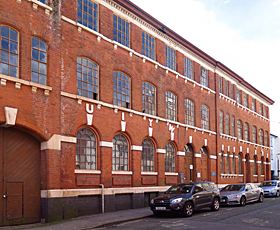
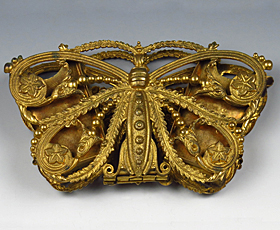 Photo 6 - Henry Jenkin's factory in Birminghan
Photo 7 - Avery Butterfly-Filigree needle case
Photo 6 - Henry Jenkin's factory in Birminghan
Photo 7 - Avery Butterfly-Filigree needle case
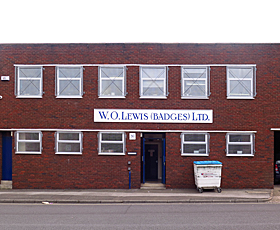
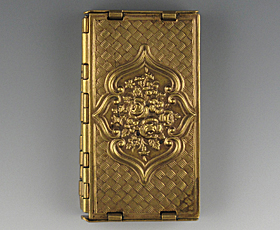 Photo 8 - W. O. Lewis building in Birmingham
Photo 9 - Beatrice needle case
Photo 8 - W. O. Lewis building in Birmingham
Photo 9 - Beatrice needle case
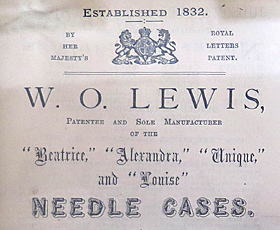
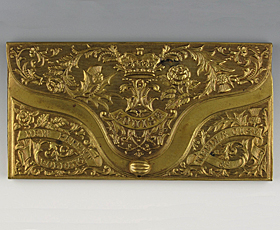 Photo 10 - W. O. Lewis advertisement circa 1873
Photo 11 - Louise needle case
Photo 10 - W. O. Lewis advertisement circa 1873
Photo 11 - Louise needle case
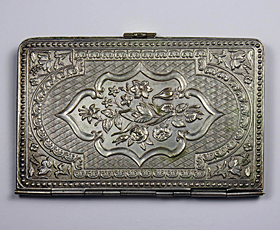
Photo 12 - Unique needle case
Several days later I arrived in Redditch, the town where 90% of the world’s needles were manufactured during the Victorian period. Within a day I learned that the Methodist church, built in 1895 and funded in part by William Avery, had recently been demolished. In its place a series of townhouses were currently being built. After talking with several of the workmen, I discovered that three of the four original church memorial stones were stored inside the gated construction site as the workmen were unsure what to do with them. I subsequently made arrangements with the worker’s supervisor and the Forge Mill Needle Museum so the stones could be transported to the museum where they would be preserved, after all each stone contained the surname of one of the area’s original needle manufacturers. I celebrating their arrival at the museum a day later by sitting on the stone dedicated in 1895 to the memory of William Avery’s wife (photo 13) who died that year. As a result, I decided I needed to purchase something in Redditch to always remind me of this moment. At the museum’s gift shop, I found a Forge Mill Needle Museum thimble that did the trick (photo 14).
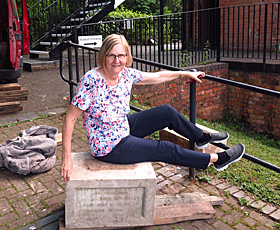
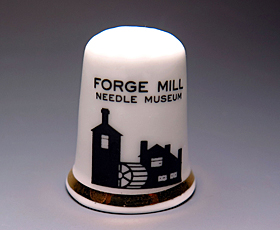 Photo 13 - Terry with the Avery memorial stone
Photo 14 - Forge Mill Museum thimble
Photo 13 - Terry with the Avery memorial stone
Photo 14 - Forge Mill Museum thimble
Studley is a small town a few miles southeast of Redditch where several Victorian era needle manufacturers had their factories. I had the pleasure of touring Abel Morrrall‘s original Priory Mill needle factory building and grounds on the Arrow River with my friend Raymond McLaren, a fish hook researcher. I bet you didn’t know that fish hooks and needles were made by the same companies. But for me I wanted to see the site where the original William Hall & Co factory was located. The week before my trip to the UK, I obtained the Organ Grinder (photo 15) Avery style needle case which had the Hall name stamped on the top. I knew I needed something to make it even more special. Ray and I walked down the street where the factory was originally located and, although it no longer existed, when we reached the corner, I was stunned to see a roundabout with an amazing needle statue in the middle of the intersection (photo 16).
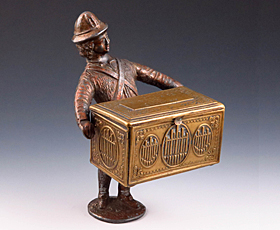
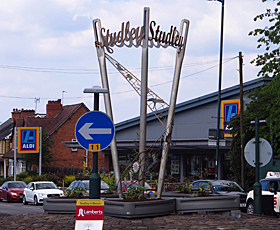 Photo 15 - Organ Grinder needle case
Photo 16 - Studley needle statue
Photo 15 - Organ Grinder needle case
Photo 16 - Studley needle statue
Before my presentation at the Forge Mill Needle Museum I had the pleasure of dining one evening with Jo-Ann Gloger, the Keeper of Collections at the museum, and Raymond (photo 17). My presentation was well received and again I met many interesting people in addition to viewing the museum’s excellent collection. And now that I am back home in Palatine Illinois, I have some wonderful memories and several of the needle cases in my collection will always be with me to remind me of this amazing trip.
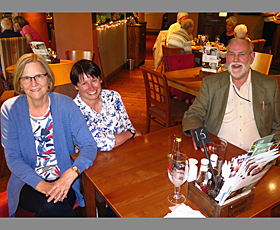
Photo 17 - Terry with Jo-Ann Gloger and Ray McLaren




